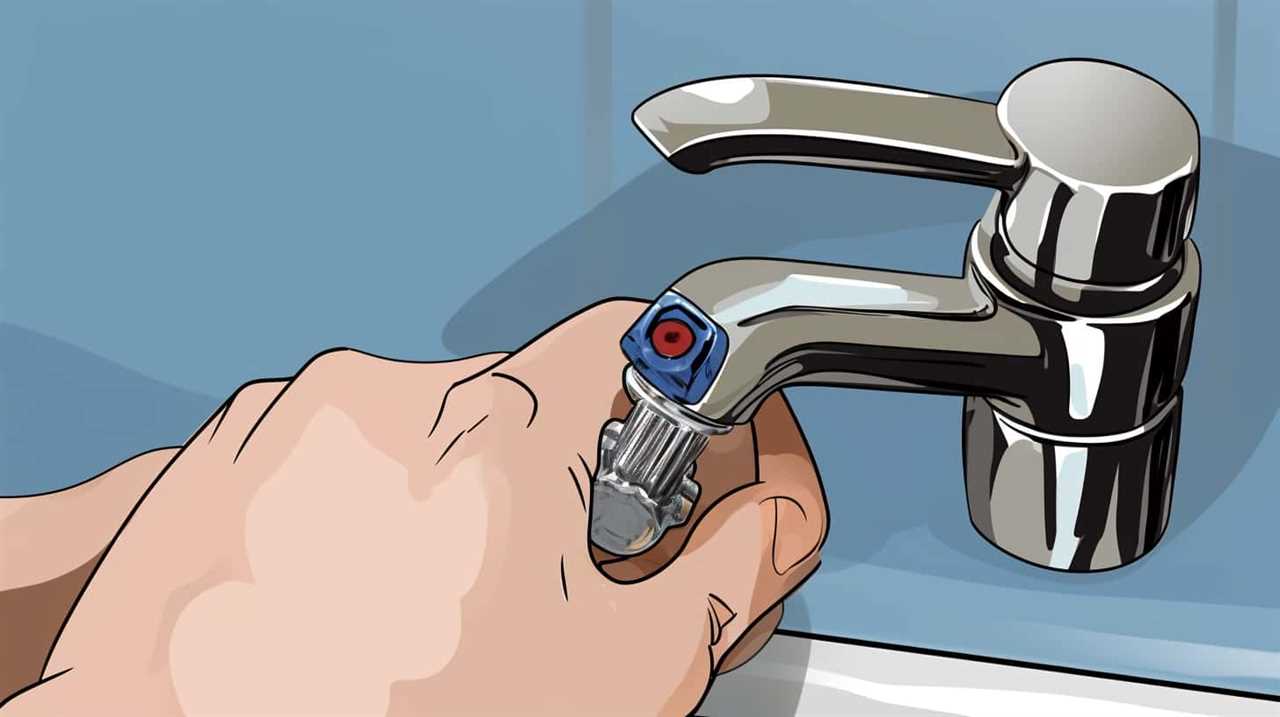Ever wondered why your toilet tank won’t fill up? Don’t worry! We’re here to help you solve the mystery and give you the answers you’re looking for.
In this informative article, we will explore the common causes behind a non-filling toilet tank and guide you through troubleshooting and fixing the problem.
So, hold on tight and get ready to become a master of toilet tank maintenance!
Key Takeaways
- Faulty fill valve can cause the toilet tank to not fill properly.
- Issues with the float ball or float cup can also prevent the tank from filling.
- Clogged or malfunctioning supply lines may be the reason behind the problem.
- Troubleshooting steps include checking water pressure, inspecting the fill valve, testing for leaks, and addressing issues with the float ball or float cup.
Common Causes of Toilet Tank Not Filling
One common cause of a toilet tank not filling is a faulty fill valve. The fill valve is responsible for controlling the flow of water into the tank. If it isn’t functioning properly, it may not allow water to enter the tank, resulting in a lack of filling.

Another possible cause of a toilet tank not filling is water pressure problems. Insufficient water pressure can prevent the tank from filling properly. This can be caused by issues with the water supply or plumbing system.
Additionally, a broken flush handle can also lead to a toilet tank not filling. If the handle isn’t functioning correctly, it may not activate the flushing mechanism, preventing water from entering the tank.
It’s important to address these issues promptly to ensure proper toilet functionality.
Faulty Fill Valve: A Possible Culprit
The faulty fill valve is often to blame when a toilet tank isn’t filling properly. The fill valve is responsible for regulating the water flow into the tank, allowing it to fill to the appropriate level. When the fill valve malfunctions, it can result in inadequate or no water entering the tank.

To troubleshoot this issue, there are a few DIY solutions you can try. First, check if the fill valve is fully open and not restricted by debris. If it’s partially closed or blocked, clean or replace the fill valve as needed.
Additionally, ensure that the fill valve is properly adjusted to allow the correct amount of water to enter the tank. By following these troubleshooting tips, you can resolve the problem with a faulty fill valve and restore the proper functioning of your toilet tank.
Issues With the Float Ball or Float Cup
Having problems with the float ball or float cup can also cause issues with a toilet tank not filling properly. Here are some common issues related to the float ball or float cup:
- Water level too low: If the water level in the toilet tank is consistently low, it may be due to a problem with the float ball or float cup. These components are responsible for regulating the water level in the tank.
- Float ball or float cup not adjusted properly: The float ball or float cup should be adjusted so that it sits at the correct height. If it’s too high or too low, it can prevent the toilet tank from filling to the desired level.
- Damaged float ball or float cup: If the float ball or float cup is damaged or worn out, it may not function properly. This can lead to issues with the water level in the toilet tank.
- Obstructions or debris: Sometimes, obstructions or debris can get trapped around the float ball or float cup, preventing them from moving freely. This can interfere with the filling of the toilet tank.
To fix issues with the float ball or float cup, ensure that they’re adjusted correctly and free from any damage or obstructions.

Clogged or Malfunctioning Supply Line
Our first step in troubleshooting the issue of a toilet tank not filling is to check for any clogs or malfunctions in our supply line. A clogged or malfunctioning supply line can prevent water from flowing into the tank, causing the tank to not fill properly. One common issue with the supply line is leaking pipes, which can result in a reduced water flow or even a complete blockage. Another potential problem is low water pressure, which can restrict the flow of water into the tank. To determine if the supply line is the culprit, we can perform a simple test. By turning off the water supply and disconnecting the supply line, we can inspect it for any signs of clogging or damage. If necessary, we can replace the supply line to restore proper water flow to the toilet tank.
| Common Issues | Symptoms | Solutions |
|---|---|---|
| Leaking pipes | Reduced water flow or blockage | Inspect and repair or replace leaking pipes. |
| Low water pressure | Restricted water flow into the tank | Test water pressure and adjust if necessary. |
| Damaged supply line | Water leakage or restricted flow | Replace the supply line if damaged. |
How to Troubleshoot and Fix the Problem
To troubleshoot and fix the problem of a toilet tank not filling, we can start by checking the fill valve. Here are four steps to help you address the issue:
- Check water pressure: Ensure that there are no water pressure problems in your house. Low water pressure can prevent the tank from filling properly. You can test this by turning on other faucets and checking their water flow.
- Inspect the fill valve: Examine the fill valve for any signs of damage or blockage. Sediments or debris can obstruct the valve, preventing water from entering the tank. Clean or replace the valve if necessary.
- Check for toilet tank leakage: Inspect the tank for any leaks. A leaking toilet tank can affect the filling process. Look for cracks, loose connections, or faulty seals. Repair or replace any damaged components accordingly.
- Adjust the fill valve height: Ensure that the fill valve is set at the correct height. Incorrect positioning can prevent proper water flow into the tank. Adjust the float to the appropriate level to ensure optimal filling.
Frequently Asked Questions
Can a Faulty Fill Valve Cause the Toilet Tank to Not Fill Properly?
Yes, a faulty fill valve can cause the toilet tank to not fill properly. It may result in low water pressure, preventing adequate filling. Additionally, mineral build-up can obstruct the fill valve’s function, further inhibiting proper tank filling.
How Do I Know if the Float Ball or Float Cup Is Causing the Toilet Tank to Not Fill?
To determine if the float ball or float cup is the culprit for a toilet tank not filling, we should troubleshoot the float mechanism. By identifying water supply issues, we can pinpoint the exact problem.

What Are Some Signs of a Clogged or Malfunctioning Supply Line That Could Be Affecting the Toilet Tank Filling?
Signs of a clogged or malfunctioning supply line affecting toilet tank filling include low water pressure, slow tank refill, or no water at all. Troubleshooting techniques involve checking for blockages, replacing faulty parts, or calling a professional plumber.
Are There Any Other Common Causes for a Toilet Tank Not Filling That Are Not Mentioned in This Article?
There could be various causes for a toilet tank not filling, apart from the ones mentioned. To troubleshoot, you may want to check the fill valve, water supply, or even the flapper.
What Are Some Additional Troubleshooting and Fixing Techniques That Can Be Tried if the Suggested Methods in the Article Do Not Work?
What troubleshooting techniques can we try if the suggested methods in the article don’t work? Are there alternative fixing methods we can explore? Let’s discuss additional ways to address the issue.
Conclusion
In conclusion, when facing a toilet tank not filling, it’s crucial to identify the root cause of the issue. Common culprits include a faulty fill valve, problems with the float ball or float cup, and a clogged or malfunctioning supply line. By troubleshooting and fixing these problems, you can ensure a properly functioning toilet.

Did you know that a leaking toilet can waste up to 200 gallons of water per day? This shocking statistic highlights the urgency of addressing toilet tank filling issues promptly.










